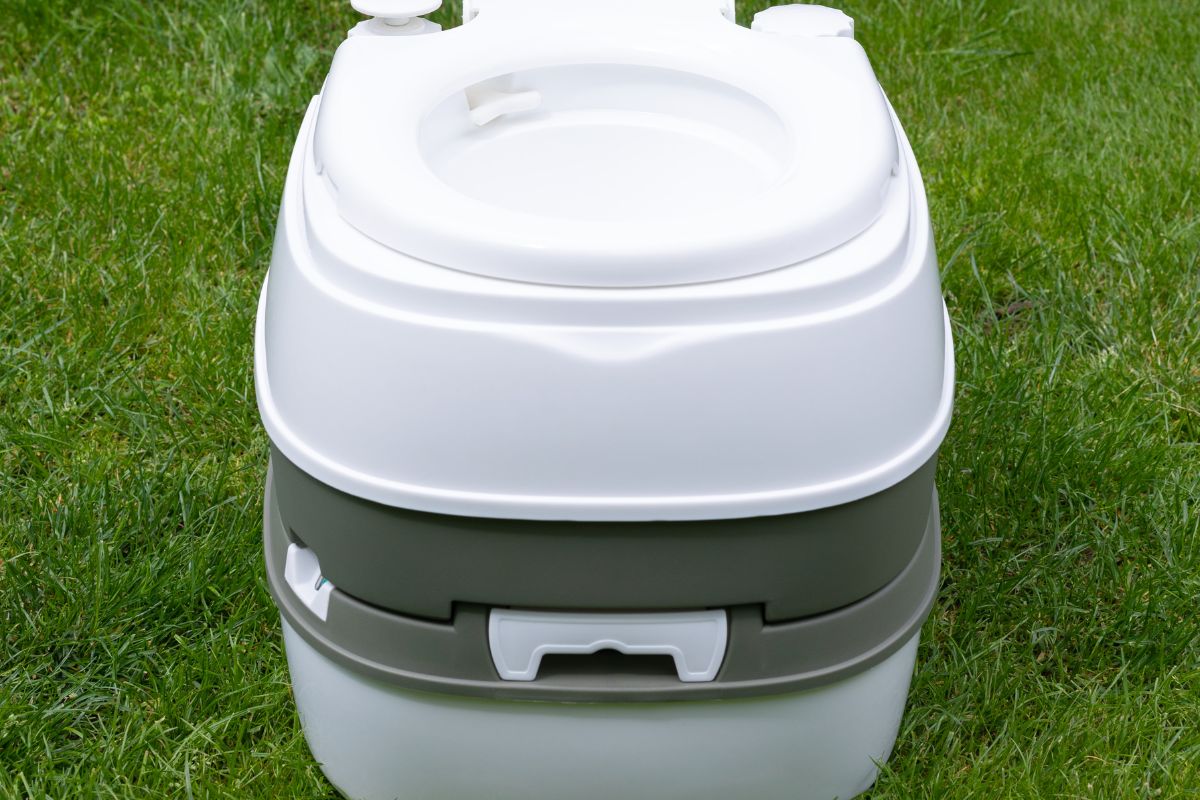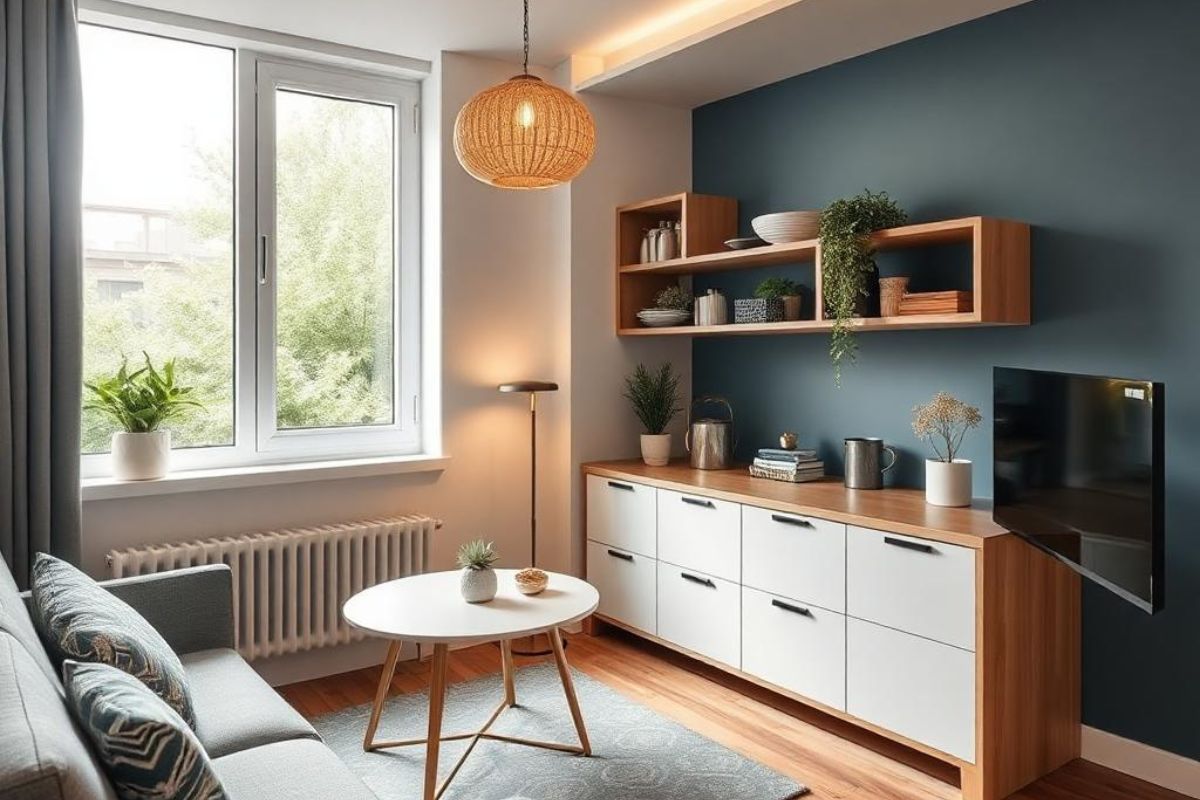If you're looking for the best composting toilet for your tiny home, check out models like Nature’s Head, Sun-Mar Excel, Separett Villa 9215, Camco portable, or Laveo Dry Flush. These toilets save water, control odors, and have compact designs ideal for small spaces. Make sure you pick one with a reliable separation system and easy cleaning features. You’ll find out which options suit your budget, maintenance routines, and eco-friendly goals as you go further.
Key Takeaways
-
Nature’s Head Self-Contained Toilet is highly rated for tiny homes due to its compact design, odor control, and easy installation.
-
Separett Villa 9215 offers advanced urine-diverting technology and modern looks, making it ideal for eco-conscious, small-space living.
-
Sun-Mar Excel provides high capacity and simple, waterless operation, suitable for off-grid or larger tiny households.
-
Laveo Dry Flush Toilet is fully electric, cartridge-based, and mess-free, perfect for those wanting convenience with minimal maintenance.
-
Composting toilets significantly reduce water usage and plumbing needs, supporting sustainable, off-grid tiny home lifestyles.
Why Choose a Composting Toilet for Your Tiny Home
When you’re living in a tiny home, every resource and square foot counts, which is why a composting toilet can make a big difference. You don’t need a traditional plumbing system or access to a septic tank—composting toilets let you live off-grid while minimizing your environmental impact. They use little to no water, so you save on utility bills and conserve precious resources.
By turning waste into compost, you’ll reduce your household’s output and avoid contributing to sewage systems. Composting toilets are often compact, fitting neatly into tight spaces and freeing up room for other essentials. They’re also relatively easy to install and maintain, letting you focus on the joys of tiny home living without worrying about complicated waste management.

Key Features to Consider When Selecting a Composting Toilet
Choosing a composting toilet for your tiny home involves more than just finding a model that fits your space. You’ll want to look for a toilet with an efficient separation system, which divides liquids from solids to reduce odors and simplify maintenance. Consider how easy it is to empty and clean the unit—removable containers and accessible parts make a big difference.
Ventilation is essential, so check if the toilet comes with a built-in fan or venting kit to keep your space fresh. Don’t overlook capacity; make sure it suits your household’s needs so you’re not emptying it too often. Finally, think about power requirements—some models run on batteries or solar, while others are completely non-electric for off-grid convenience.

Top 5 Composting Toilets for Small Spaces
With dozens of composting toilets on the market, narrowing it down to the top five can save you time and hassle. For tiny homes, you’ll want options that maximize space without sacrificing performance. The Nature’s Head Self-Contained Toilet is a top pick—compact, odorless, and easy to install. Sun-Mar Excel is another favorite, offering high capacity and a simple design for small spaces.
If you’re looking for portability, consider the Camco Portable Travel Toilet, which fits under counters and is lightweight. The Separett Villa 9215 stands out for its modern look and urine-diverting tech. Finally, the Laveo Dry Flush Toilet is fully electric and uses disposable cartridges, making it a clean, no-mess choice. Choose based on your size, style, and power needs.
Maintenance Tips for Long-Lasting Performance
After selecting the right composting toilet for your tiny home, keeping it in good working order is just as important as your initial choice. Start by emptying the solids and liquids containers regularly—don’t wait until they’re full. Use compostable liners for easy cleanup, and always add a bulking agent like coconut coir or sawdust after each use to control moisture and odor.
Wipe down surfaces weekly with a mild, non-chemical cleaner to prevent buildup. Check the ventilation fan and seals often to verify they’re working efficiently. If your unit has agitators, turn them as recommended to aid decomposition. Finally, inspect components for wear and replace parts as needed. Consistent maintenance verifies your composting toilet remains hygienic and lasts for years.
Comparing Costs and Environmental Impact
While upfront costs often shape decisions, it’s essential to weigh both the price and the ecological benefits of composting toilets for your tiny home. Composting toilets typically range from $800 to $2,000, depending on features and brand. Though this initial investment may seem steep, you’ll save on plumbing, septic installation, and water bills over time. You won’t need a black water tank or complex sewage system, which means fewer ongoing expenses.

Environmentally, composting toilets reduce water usage—some models use none at all. By turning waste into compost, you’ll minimize landfill contributions and chemical treatment needs. If you want to maximize sustainability, choose a model that separates liquids and solids for easier composting. In the long run, you’ll save money and shrink your ecological footprint.
Conclusion
Choosing the right composting toilet for your tiny home means you’ll save water, reduce waste, and live more sustainably. Focus on features that fit your space and lifestyle, like ease of maintenance and odor control. With the top options reviewed here, you’re set to make an informed choice. Remember to follow simple care routines for long-lasting performance. By investing in an eco-friendly composting toilet, you’re making a practical choice for both your wallet and the environment.






Share: